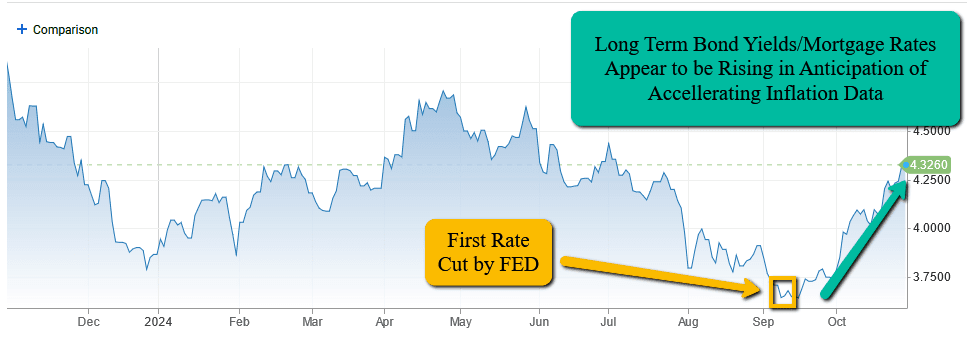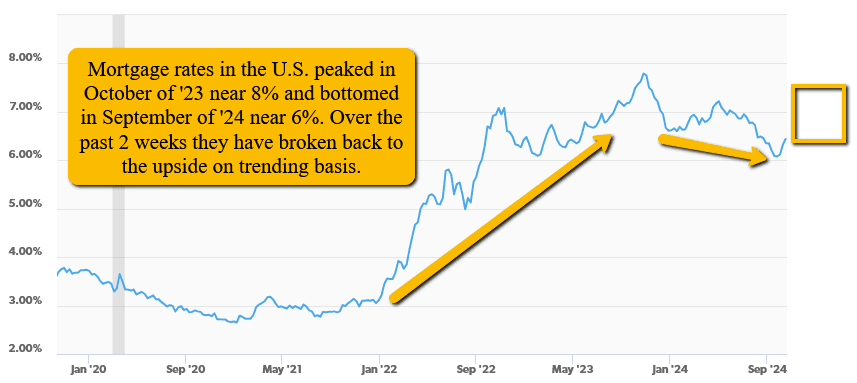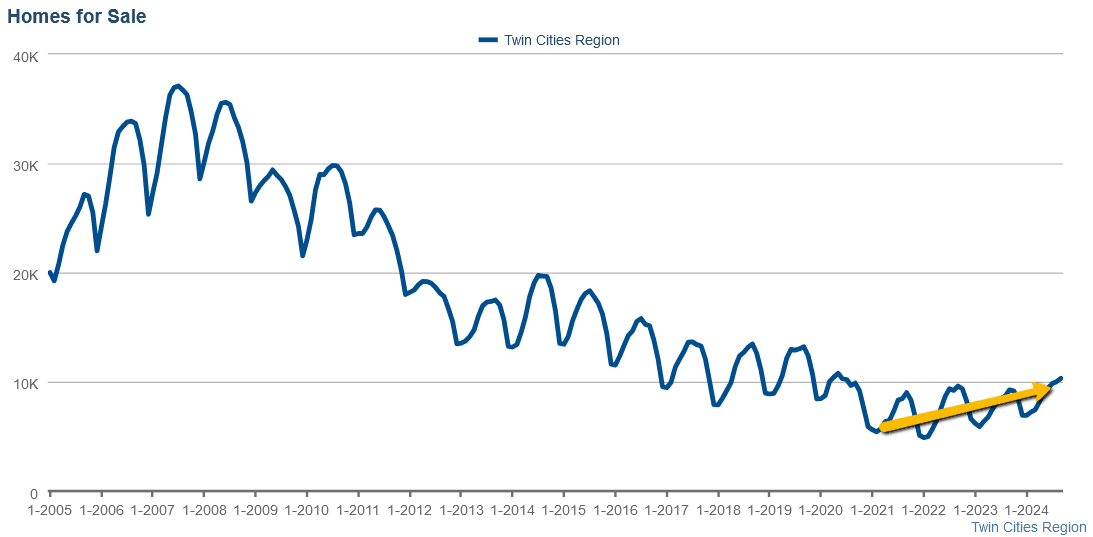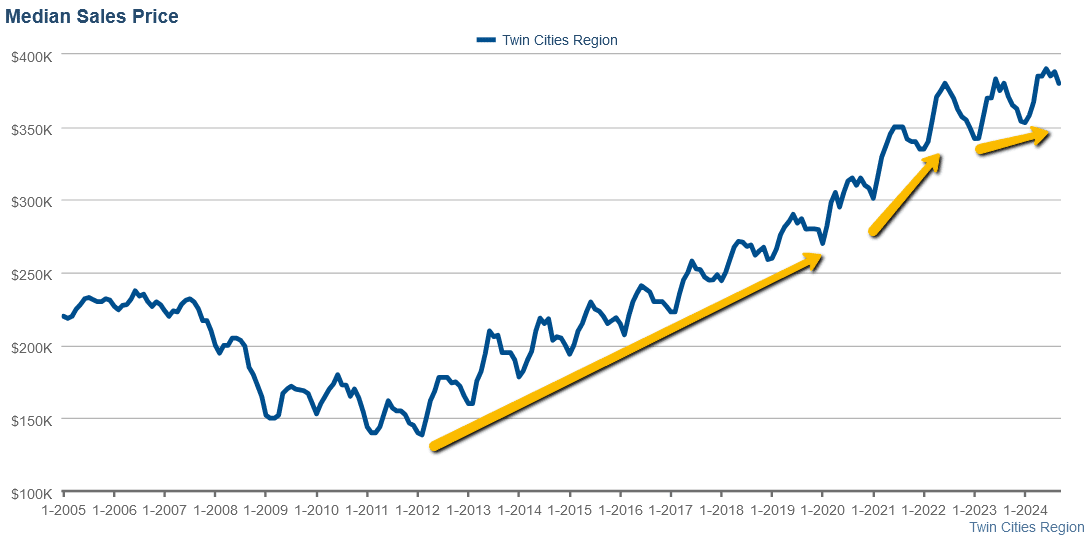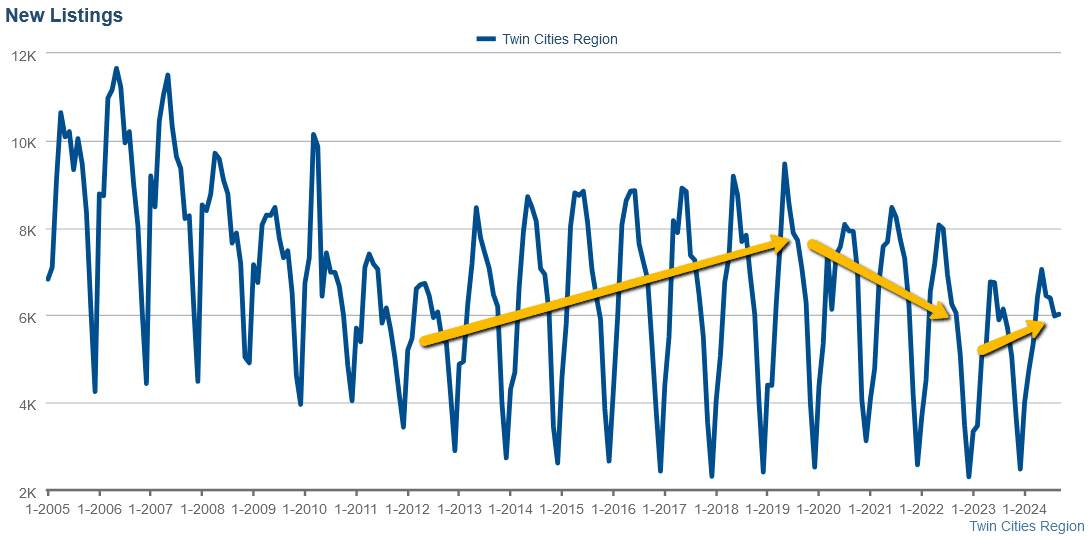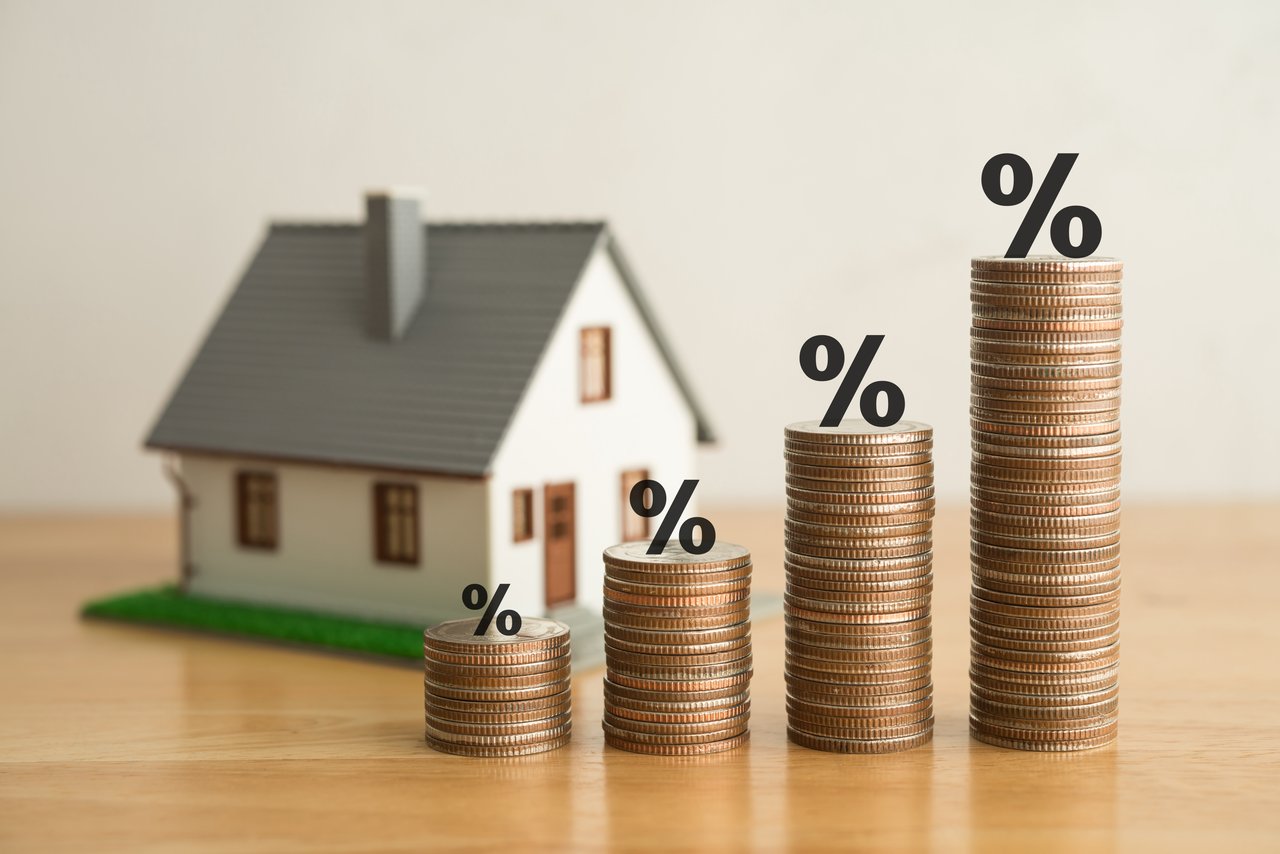MARKET SHIFT: HOME INVENTORY IN THE TWIN CITIES APPROACHES A 5-YEAR HIGH WHILE PENDING SALES FALL TO A 13-YEAR LOW AMIDST THE 'HIGHER FOR LONGER' INTEREST RATE REGIME
Authors:

Data Sources: You can track Twin Cities housing market trends here. You can track mortgage rates here. You can track home builder confidence here. You can track lumber prices here. You can track showing volume here.
Seasonal Summary: We have always said that early fall is the best season to buy real estate and this fall has been no exception. In the fall, demand is down significantly from its spring peak and declining while inventory is nearing its highest level of the year. Simply stated, you have less competition from buyers and more options to consider. Late fall to early winter can be a great time to buy if you can find the right property, however after October, inventory starts declining pretty rapidly along with demand, so finding the right home can be challenging. Then in mid-winter (sometime between mid-January and early February) demand starts to accelerate against bottoming inventory, and the spring acceleration in prices begins. Regardless of who is elected, over the next two and half months we expect sales volume to continue to contract and prices to continue to marginally soften as the market forms a seasonal bottom ahead of spring 2025.
Macro Summary: Amidst the "higher for longer" interest rate regime that began in January of 2022, housing markets, both locally and nationally, have continued to shift from extreme, pandemic fueled, inflationary markets (2020 - 2022), to softer, more neutral markets (2023 - 2024), and in some cases (areas of SW Florida for example), there are market segments that have begun to tilt towards buyers. Although the Twin Cities has a relatively strong job market that helps reduce price volatility in housing, its housing market is not immune to this national trend and has been clearly shifting over the past two years to a softer market as the median home price is up only 2.4% YOY, and 4.9% over the past 24 months, with much of that marginal price inflation happening at the lower end/starter home segment of the market.
Mortgage Rates: Consensus belief heading into 2024 was that inflation was largely vanquished and that mortgage rates would fall back to pre-pandemic levels in the 4 - 5% range by the end of the year, but that does not appear to be the case. We have also noticed a misconception in the public regarding the relationship between the changes made to the federal funds rate, and changes to mortgage rates in that many people seem to believe that there is a direct relationship, which is not true. Mortgage-backed securities are long term debt that trade in the bond market. The three primary factors that impact bond yields are relative changes to growth, inflation, and Fed policy (both anticipated and realized). The bond market uses evolving inflation data, growth data and Fed sentiment, to anticipate growth data, inflation data and Federal Reserve moves, so often by the time the Fed takes action, that action is already reflected in the mortgage rates. The exception to that is if the Federal Reserve makes a move that significantly differs from what the markets expected.
Mortgage rates have cooled significantly since their cycle highs at near 8%, from October of '23, however our economic advisor (Hedgeye Risk Management) has had inflation accelerating starting in Q4 of '24 (starting around October 1) and lasting at least through Q2 of '25, so we believe the immediate cycle lows for mortgage rates are behind us and we are anticipating more upside risk to bond yield/mortgages rates, than downside potential, at least through the first half of '25. Since the Fed cut rates last month, the average 30-Year-Fixed mortgage rate in the U.S. has ripped to the upside from 6% back to almost 7%.
This chart is from 10/29/24
This chart is from 10/11/24
Home Inventory: While still low by historical standards, housing inventory in the Twin Cities, not including shadow inventory (like available lots in new construction developments), has moved back above 10,000 units for the first time since the onset of the pandemic. The current level of inventory locally is 10,357 actively listed homes, condos and lofts. This is likely at or near a seasonal peak as inventory tends to decline through the latter part of fall and through the winter, typically bottoming sometime during the month of January.
Pending Home Sales: Pending home sales in the Twin Cities fell 8% in September to 3,719 units. This represents the lowest # of pending sales during the month of September since 2011, the height of the 2008 financial and foreclosure crisis, and a 13-year low. We expect pending sales volume to continue to decline until forming a bottom at some point in January where it will then begin to reverse back to acceleration.
The Median Home Price: The median home price in the Twin Cities continued its seasonal decline in September but remains up 2.4% YOY, a continued shift towards a neutral a neutral market.
New Listings: In September, new listing volume in the Twin Cities continued its acceleration from the lows of 2023, inspired by the dynamic of consumers being "married to their mortgage rates", caused by the higher for longer interest rate regime. This appears to be be inspired by 1) the correction in interest rates from 8% down to 6%, 2) a general shift in the desire to own multiple homes, land, etc, and 3) with the idea that people can only stay married to their mortgage so long as their home needs do not urgently change, but eventually, people have to sell or move so I think there is some pent up selling happening.
Homebuilder Sentiment: "The NAHB/Wells Fargo Housing Market Index in the US rose to 43 in October of 2024 from 41 in the previous month, the highest since June, and slightly ahead of market expectations of 42. The gauge for current sales conditions rose by 2 points to 47, while sales expectations in the upcoming 6 months rose by a sharper 4 points to 57, supported by expectations that rate cuts by the Fed would stimulate housing demand. Accordingly, the gauge measuring traffic of prospective buyers rose by 2 points to 29. In the meantime, the share of builders that are cutting prices was loosely unchanged from the prior month at 32%."
It is our current view that the narrative which spurred the increase in builder sentiment in October will play out bearishly for builder sentiment in the immediate term as we think it is likely (Source: Hedgeye Risk Management) that inflation risk will re-accelerate through the first part of 2025 which would keep upward pressure on rates and downward pressure on builder confidence.
This concludes our Twin Cities housing market insight for October of 2024. Please don't hesitate to call us at 952-222-SOLD if you would like to go more in depth on a particular market segment or dive into the current fair market value of a property that you currently own or manage.
Sources: NorthstarMLS, Infosparks Data, Hedgeeye Risk Management, FreddieMac.com, Nasdaq.com, TradingEconomics.com, fred.stlouisfed.org, The National Association of Home Builders

